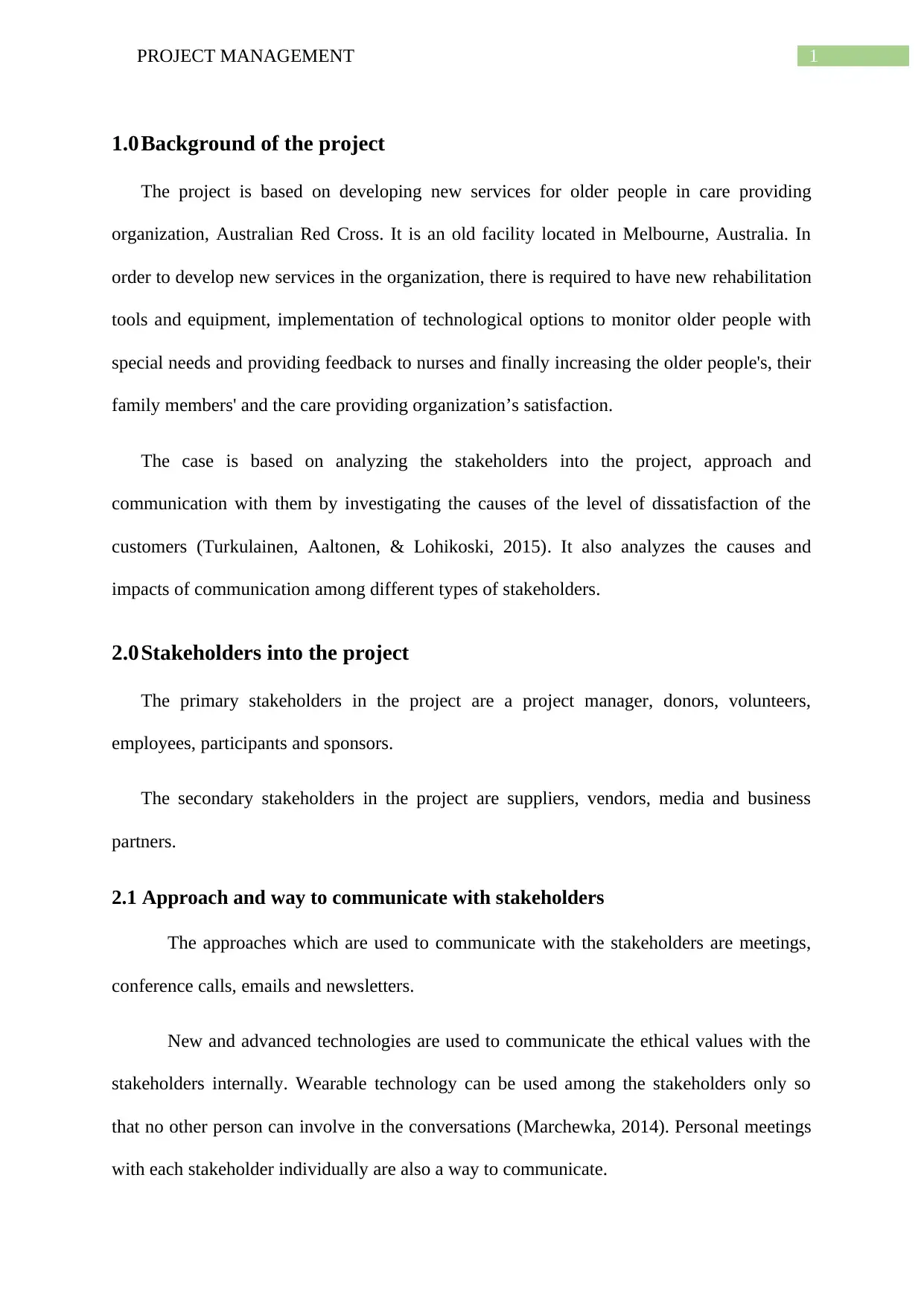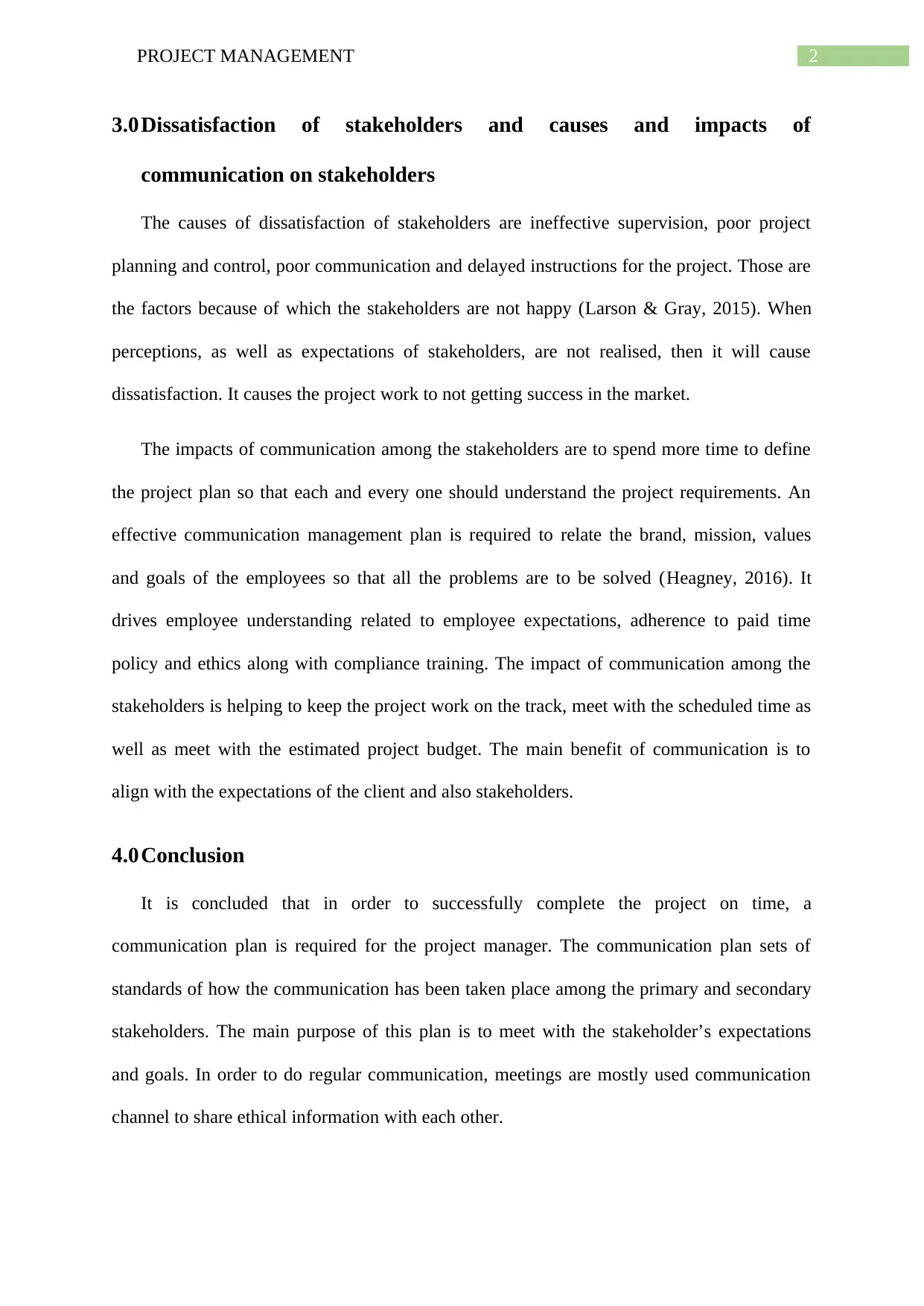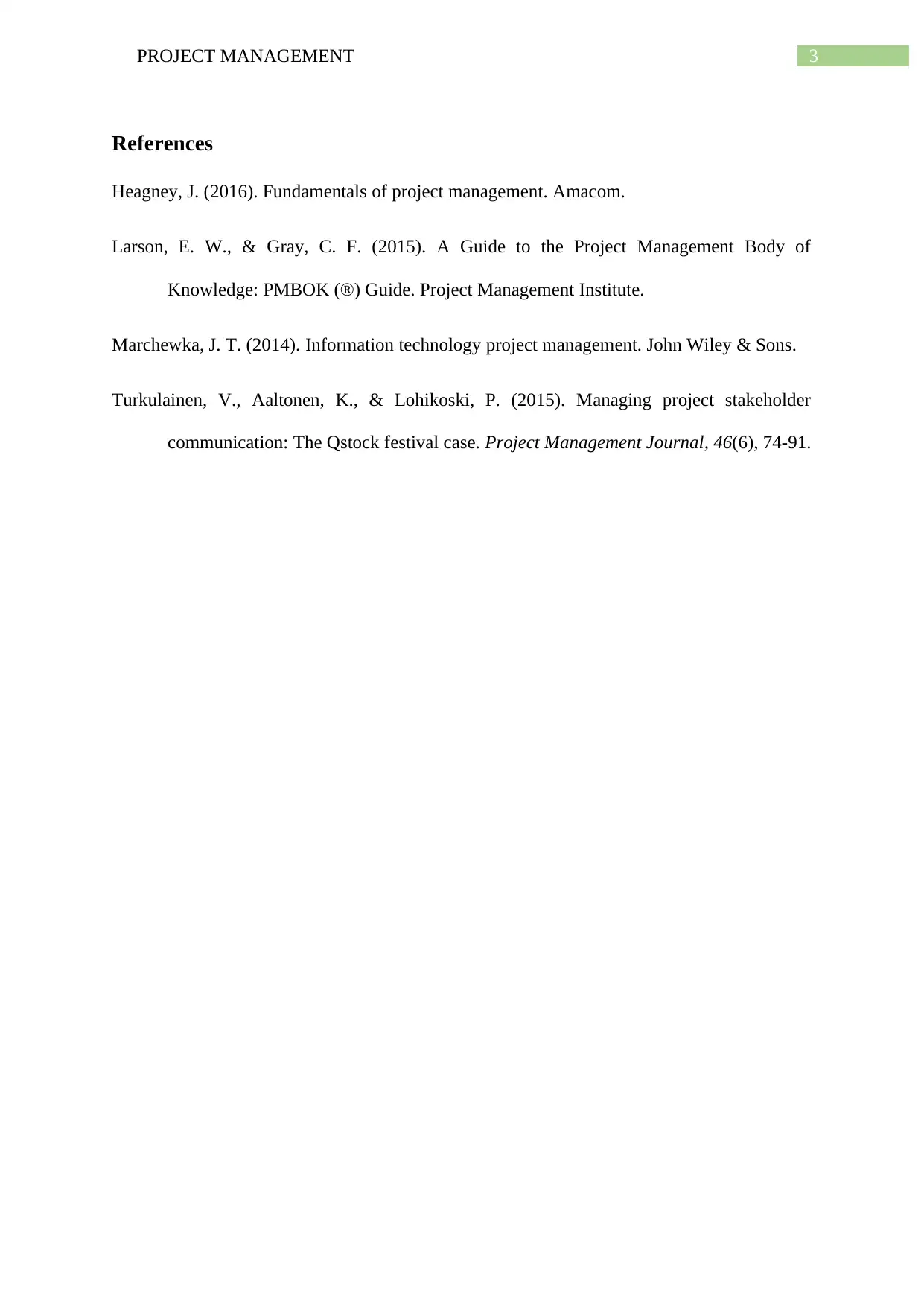Project Management Report: Australian Red Cross Project Analysis
VerifiedAdded on 2023/06/03
|4
|712
|151
Report
AI Summary
This report analyzes a project management case study focused on developing new services for older people within an Australian Red Cross aged care facility. The report identifies key stakeholders, including project managers, donors, employees, and residents, and explores effective communication strategies such as meetings, emails, and the use of technology. It addresses ethical considerations related to monitoring older people and discusses the causes of stakeholder dissatisfaction, such as poor planning and communication. The report emphasizes the importance of a communication plan to manage stakeholder expectations and goals, and provides a conclusion on the successful completion of the project. The assessment also includes a reflective component, demonstrating self-awareness and insight into the issues discussed.
1 out of 4











![[object Object]](/_next/static/media/star-bottom.7253800d.svg)